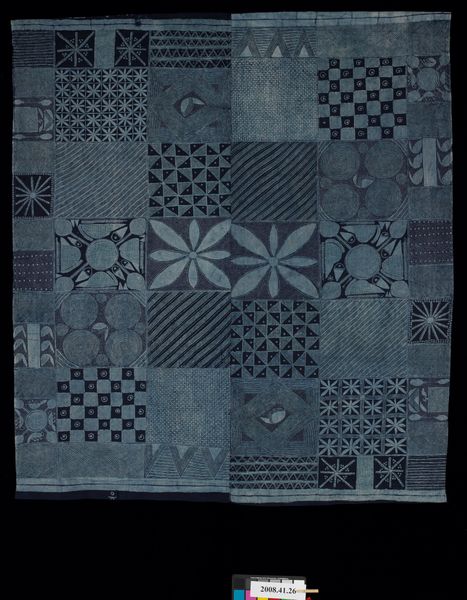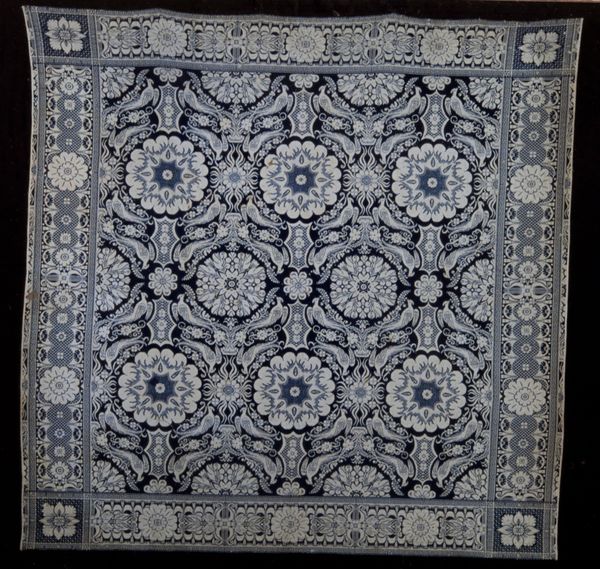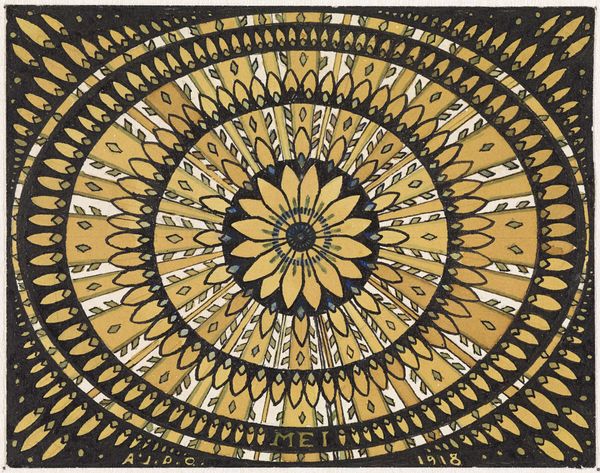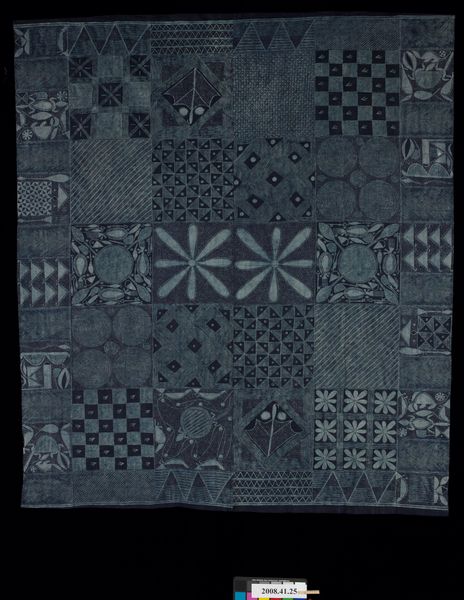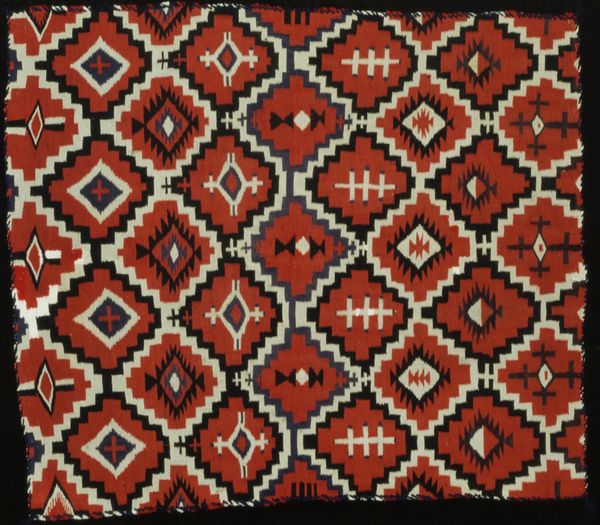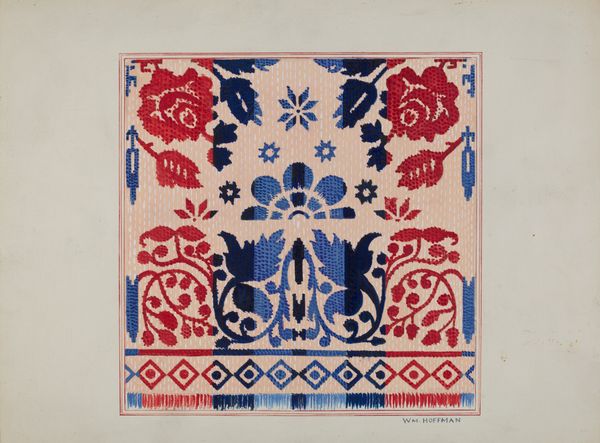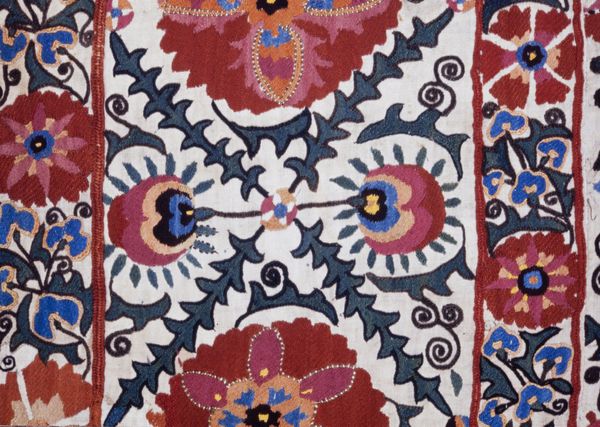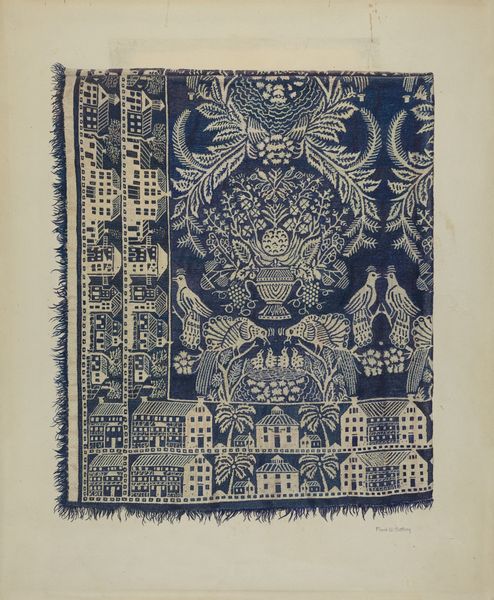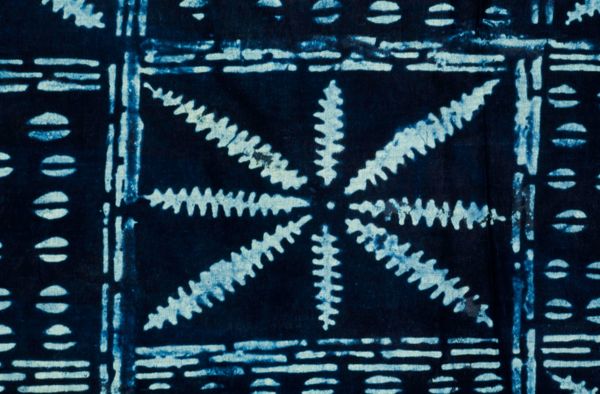
fibre-art, textile
#
pattern heavy
#
fibre-art
#
textile
#
collage layering style
#
fashion and textile design
#
hand-embroidered
#
geometric
#
fabric design
#
repetition of pattern
#
pattern repetition
#
textile design
#
beaded
#
layered pattern
Dimensions: 19 x 16 5/16 in. (48.26 x 41.43 cm) (without ties)
Copyright: Public Domain
Editor: This piece is titled "Woman's Bib," it’s from around the 20th century and was made by a Black Hmong artist using weaving, textile, and cotton techniques. I’m struck by how intensely patterned it is. There's such deliberate repetition of geometric motifs. What's your interpretation of this bib, considering its historical and cultural context? Curator: Well, immediately I think about the function of such an object within its original cultural setting. This bib wasn't just about keeping clothes clean; it was likely a significant cultural marker. We can analyze how the bib reinforced identity through textile design. The Hmong people, often marginalized, have historically used textiles as a form of cultural preservation and resistance. Editor: Resistance, how so? Curator: Think about it: controlled creation and use of culturally specific patterns. Within Hmong communities, specific motifs and weaving styles carry complex meanings. Who decides which designs are woven and worn becomes a key part of understanding the power dynamics within and outside of the community. This bib could represent clan affiliation, social status, or even serve as protection for the wearer. Do you see any specific motifs that stand out to you? Editor: The swirling patterns definitely grab my attention, and all the star-like symbols too. It all seems to be so intentional. Curator: Precisely! These aren’t random decorations. Researching the symbology within Hmong textile traditions could unlock a deeper understanding. It's important to consider who was making these objects, and under what conditions. Understanding those socioeconomic elements allows us to see past pure aesthetics. Editor: That makes perfect sense. I had been focusing on the visual aspects but missed the significance of its social context. Thanks. Curator: Likewise! Looking closer reveals this bib to be much more than it seems.
Comments
minneapolisinstituteofart almost 2 years ago
⋮
In Hmong tradition, women have created complex textiles, often with geometric, abstracted patterns, that provide a shared visual language within an oral culture. Among the most difficult to produce are indigo batiks, which depend on a resist-dyeing process. First, the design is drawn on the cloth with wax, which resists dyeing and protects the pattern. Then the cloth is dipped in an indigo dye bath. Next, the wax is removed, revealing the intricate design. Patterns signify communal values, with the spiral motifs seen here associated with family. Over centuries of displacement, the Hmong use textiles as a primary transmitter of culture.
Join the conversation
Join millions of artists and users on Artera today and experience the ultimate creative platform.
